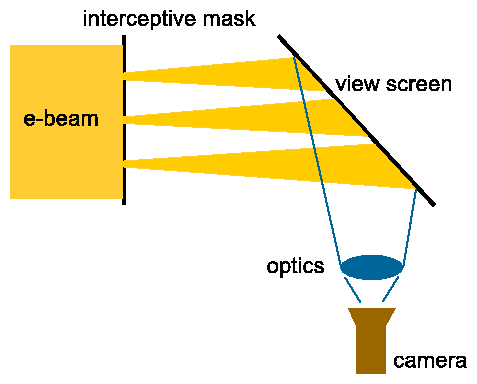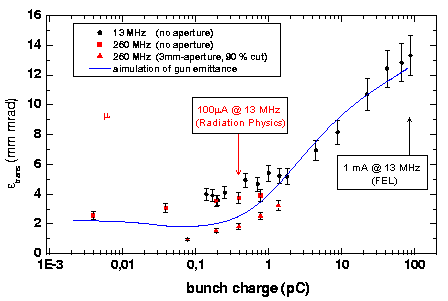|
To meet the different electron beam requirements according to the concept of ELBE to produce a wide range of radiation (Infrared radiation from FEL's, MeV-bremsstrahlung, X-rays, neutrons) an injector with optimum parameters for all these applications and easily changeable operation modes is needed. For example: to drive the FEL an electron beam with fixed repetition rate (13 MHz) at maximum peak current is necessary whereas for producing X-rays as channeling radiation the transverse emittance should be as low as possible ( < 2 mm mrad, rms). To make Time-of-Flight experiments with neutrons the pulse to pulse distance should be variable up to micro seconds. These demands are well accomplished by an electronically grid-pulsed thermionic gun [1], which can be operated with variable frequency and bunch charge. A macro pulser based on a circular magnetic bending system interrupts the beam with adjustable duty cycle and allows a very flexible time structure of the beam. The gun is operated at 250 kV. Bunch compression is done by two bunchers operating at 260 MHz and 1.3 GHz, respectively. At two locations in the injector beam line insertable apertures are installed with three different diameters to optimize beam size and transverse emittance. The described injector set up is shown in Fig. 1.

Fig. 1 Set up of the thermionic ELBE injector

Fig. 2 Multislit set up for transverse emittance measurement The electron beam from the gun and bunching stage (injector) was studied using a diagnostic module (Fig. 2). A multislit mask and a beam viewer allow to measure the transverse emittance in the range from 1 to 20 mm mrad with two different mask geometries. Fig. 3 shows the measured transverse geometric emittance of the ELBE injector at 13 MHz and 260 MHz pulse repetition rates. The 260 MHz regime allows operation at very low bunch charges which is important to achieve low emittance values. For comparison, Fig. 3 presents the results of a numerical simulation, too [2]. It can be seen that in the FEL mode the transverse emittance only slightly exceeds 13 mm mrad, which is sufficient to produce IR radiation down to a few microns. For Radiation Physics the emittance requirements can be met by increasing the repetition rate up to 260 MHz and reducing the transverse phase space by two apertures.

Fig. 3 Transverse emittance of the thermionic ELBE injector [1] ELBE Design Report, FZR (1998) [2] J. Teichert, this Report
|